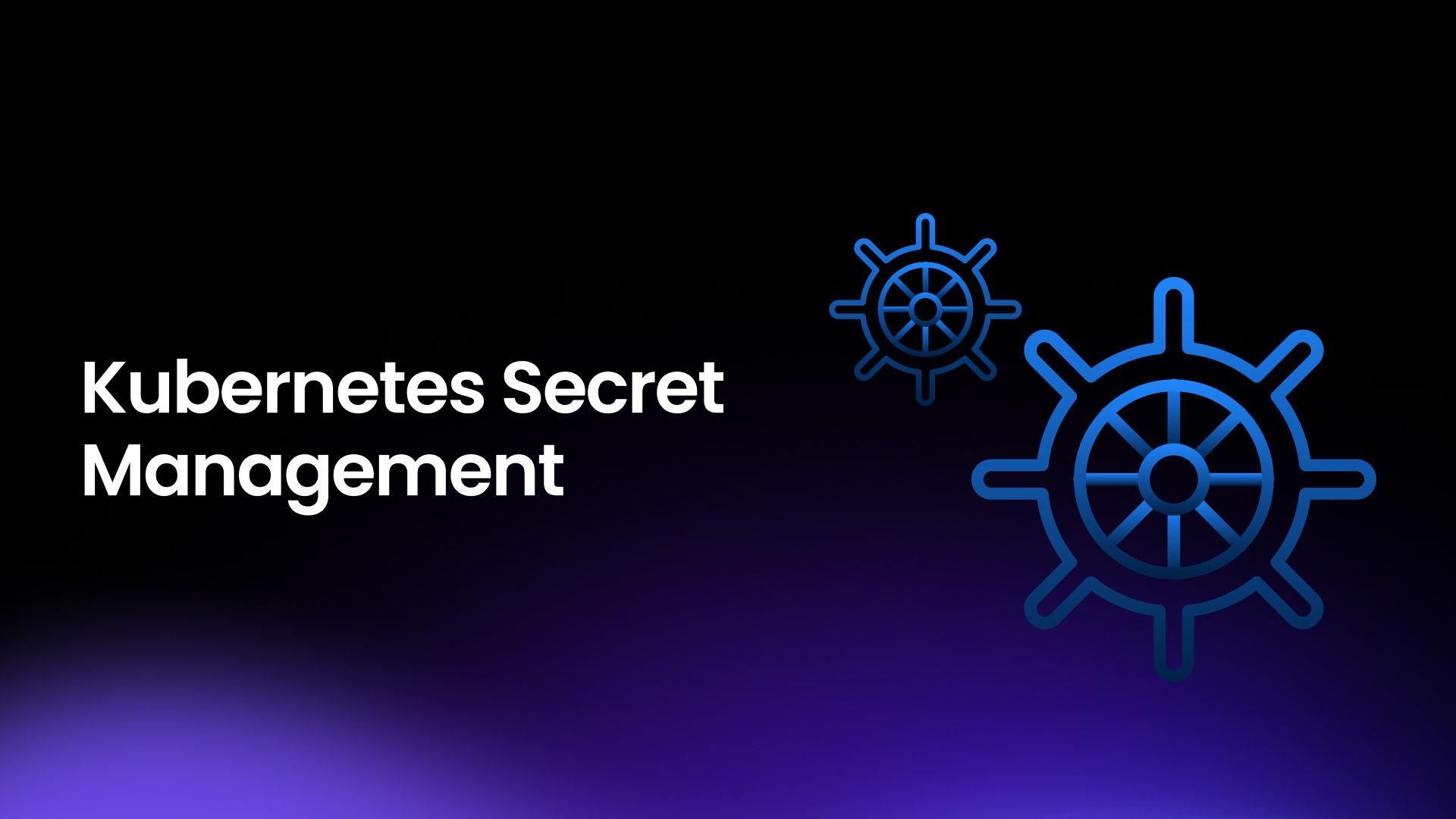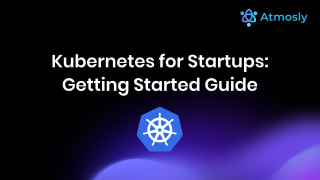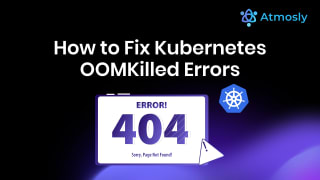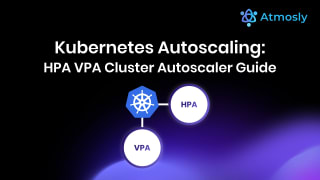Introduction
Just like in any secure application, managing API keys, passwords, and other sensitive data (secrets) is crucial. A compromised secret can lead to serious security breaches. This becomes even more critical when multiple teams like development, operations, and administration collaborate on a Kubernetes application.
Enter Kubernetes Secret Management
Kubernetes offers a robust system for managing secrets, ensuring they stay secure. This built-in functionality allows you to store and manage sensitive information without exposing it in plain text. By understanding how Kubernetes secrets work, how to configure them, and following best practices, you can significantly enhance the security of your applications.
Understanding Kubernetes Secrets
What are Kubernetes' Secrets and Why Are They Important?
In Kubernetes, secrets are used to store sensitive information that pods, containers, and other resources need to access securely. Instead of exposing sensitive keys, such as passwords, OAuth tokens, and SSH keys, Kubernetes' secret management capability helps you secure them in your Kubernetes cluster. Secrets can be mounted as volumes or exposed as environment variables in pods, allowing applications to access the sensitive information they need without exposing it in plaintext.
They are crucial for ensuring the security of your applications and infrastructure, as they allow you to store and manage sensitive data securely.
Comparing Kubernetes Secrets and External Secrets
In software development, consider using external secrets alongside Kubernetes Secrets. While Kubernetes Secrets are a native resource stored securely (base64 encoded) in etcd, they have limitations for managing secrets at scale and lack advanced security features. External secrets, on the other hand, integrate with external secret management services like AWS Secrets Manager, HashiCorp Vault, or Azure Key Vault, offering a more robust and flexible approach. This includes centralized management, encryption at rest, and access control policies. However, integrating external secrets adds complexity and may require additional setup.
Types of Kubernetes Secrets and Common Use Cases

There are several types of secrets in Kubernetes, each designed for specific use cases. They include:
- Opaque Secrets: These are generic secrets used for storing arbitrary data, such as database passwords, encryption keys, or configuration files.
- Transfer Layer Security Secrets: Often abbreviated as TLS secrets, Transfer Layer Security Secrets are used to secure data on the open internet to ensure it is safe from hackers. It stores TLS certificates and keys, which are commonly used for securing communication between components in a cluster.
- Service Account Tokens: They are secrets that allow access to service accounts such as Kubernetes API. The secrets are created to authenticate and authorize access to the Kubernetes API.
- Dockercfg Secrets: Deprecated since Kubernetes 1.19, Dockercfg secrets were used to store Docker registry authentication information. They have been replaced by more secure methods, such as using the imagePullSecrets field in a pod's spec to reference a Kubernetes secret containing the registry credentials.
- Docker-registry Secrets: Similar to Dockercfg secrets, Docker-registry secrets were used to store Docker registry authentication information. They have also been deprecated and replaced by more secure methods like imagePullSecrets.
Common uses of Kubernetes Secrets
Common use cases for Kubernetes secrets include but are not limited to:
- Storing database passwords for applications that require access to databases.
- Storing API tokens for authenticating with external services.
- Storing SSH keys for accessing remote servers or repositories.
How Secrets are Stored and Accessed in Kubernetes Clusters
Overall, Kubernetes secrets are a powerful tool for managing sensitive information in your cluster, enabling you to secure your applications and protect your data from unauthorized access. Understanding how to store, use, and manage secrets effectively is essential for ensuring the security and integrity of your Kubernetes applications.
Here's a practical guide on how to store, access, and manage Kubernetes Secrets:
Storage of Secrets:
- Kubernetes stores secrets as base64 encoded strings in etcd, its key-value store.
- To create a secret, use the kubectl create secret command, specifying the secret type (generic, docker-registry, tls, etc.) and the secret data. For example:
Put the following command on your bash;
kubectl create secret generic my-secret --from-literal=username=myuser --from-literal=password=mypasswordAccess to Secrets:
- Pods can access secrets through volumes or environment variables.
- Volumes: To mount a secret as a volume in a pod, specify the secret in the pod's volume section. For example:
volumes:
- name: secret-volumesecret:
secretName: my-secret- Environment Variables: To expose a secret as an environment variable, use the env field in the pod specification. For example:
yaml
containers:
- name: my-container
env:
- name: DB_PASSWORD
valueFrom:
secretKeyRef:
name: my-secret
key: passwordAccess Control:
- Use Role-Based Access Control (RBAC) to control access to secrets. Define RBAC policies to restrict which pods or containers can access specific secrets.
- For example, create a Role and RoleBinding to allow a pod to access a secret:
yaml
apiVersion: rbac.authorization.k8s.io/v1
kind: Role
metadata:
namespace: default
name: secret-reader
rules:
- apiGroups: [""]
resources: ["secrets"]
verbs: ["get", "watch", "list"]
---
apiVersion: rbac.authorization.k8s.io/v1
kind: RoleBinding
metadata:
name: read-secrets-global
subjects:
- kind: ServiceAccount
name: default
roleRef:
kind: Role
name: secret-reader
apiGroup: rbac.authorization.k8s.ioSecret Rotation & Operator :
Challenges in Managing Kubernetes Secrets
Managing secrets in Kubernetes comes with its own set of challenges, primarily related to security, complexity, and compliance. Understanding and addressing these challenges is crucial for maintaining the security and integrity of your Kubernetes clusters. The challenges associated with managing Kubernetes secrets include but are not limited to the following;
Security Risks Associated with Mishandling Secrets
If secrets are not properly managed, they can be exposed to unauthorized access, leading to potential data breaches and security vulnerabilities. For example, storing secrets in plaintext or exposing them in logs or environment variables can expose sensitive information to attackers.
Difficulty in Managing Secrets in a Dynamic, Containerized Environment
Kubernetes secrets need to be managed in a dynamic, containerized environment where pods can be created, destroyed, and rescheduled frequently. This dynamic nature makes it challenging to ensure that secrets are consistently managed and protected. For example, ensuring that secrets are securely distributed to new pods and revoked from old pods can be complex and error-prone.
Impact of Improper Secret Management on Application Security and Compliance
Improper management of secrets can have a significant impact on application security and compliance. For example, if secrets are not properly rotated, they can become stale and increase the risk of unauthorized access. Similarly, if secrets are not properly revoked when pods are terminated, they can remain accessible to unauthorized users. Additionally, improper secret management can lead to compliance violations, as many regulatory frameworks require organizations to protect sensitive information.
Best Practices for Managing Kubernetes Secrets
Managing secrets in Kubernetes requires careful consideration and adherence to best practices to ensure the security and integrity of your applications. Here are some best practices for managing Kubernetes secrets:
Use Environment Variables Sparingly
While convenient, using environment variables to pass secrets to your application can lead to security risks, as they can be easily exposed in logs or through other means. Whenever possible, use secret volumes to mount secrets directly into your application's file system.
Use Kubernetes Secrets API
Avoid storing secrets in your application's source code or configuration files. Instead, use the Kubernetes Secrets API to manage your secrets. This allows you to centralize the management of secrets and provides better security controls.
Use Secrets Encryption
Enable encryption at rest for your Kubernetes secrets to protect them from unauthorized access. Kubernetes supports encryption of secrets stored in etcd using the Key Management Service (KMS) of your cloud provider.
Implement Role-Based Access Control (RBAC)
Use RBAC to control access to secrets within your Kubernetes cluster. Limit access to only those users or applications that require it, and regularly review and audit access permissions.
Rotate Secrets Regularly
Regularly rotate your secrets to minimize the risk of them being compromised. Implement automated tools or scripts to rotate secrets on a scheduled basis.
Monitor and Audit Access
Monitor and audit access to secrets within your Kubernetes cluster to detect and respond to any unauthorized access attempts. Use Kubernetes auditing and logging features to track access to secrets.
Use External Secret Management Tools
Consider using external secret management tools such as HashiCorp Vault, AWS Secrets Manager, or Azure Key Vault for managing and storing your secrets. These tools provide additional security features and integration with Kubernetes.
Enable Network Policies
Use network policies to restrict the flow of traffic to and from your pods that contain sensitive information. This can help prevent unauthorized access to your secrets.
Tools and Solutions for Managing Kubernetes Secrets

Managing secrets in Kubernetes is a critical aspect of ensuring the security and integrity of your applications. There are several tools and solutions available to help you manage secrets in Kubernetes effectively. These tools provide features such as encryption, access control, and auditing to ensure that your secrets are protected from unauthorized access. Here's an overview of key management systems, Kubernetes-native solutions, and third-party tools that simplify secret management in Kubernetes:
Key Management Systems
- HashiCorp Vault: HashiCorp Vault is a popular open-source tool for managing secrets and sensitive data. It provides a secure way to store, access, and manage secrets, including integration with Kubernetes. Vault can be used to generate dynamic secrets, manage access through fine-grained policies, and audit access to secrets.
- AWS Secrets Manager: AWS Secrets Manager is a fully managed service provided by AWS for managing secrets and credentials. It allows you to store, retrieve, and manage secrets securely, with built-in encryption and access control. AWS Secrets Manager integrates seamlessly with Kubernetes, allowing you to store and manage your secrets in AWS and access them from your Kubernetes pods.
- Azure Key Vault: Azure Key Vault is a cloud service provided by Microsoft Azure for managing cryptographic keys, secrets, and certificates. Azure Key Vault integrates with Kubernetes through the Azure Key Vault FlexVolume driver, allowing you to mount secrets stored in Azure Key Vault as volumes in your Kubernetes pods.
Kubernetes-Native Solutions
- Kubernetes Secrets Store CSI Driver: The Kubernetes Secrets Store CSI Driver allows you to mount external secret stores, such as Azure Key Vault, AWS Secrets Manager, or HashiCorp Vault, as volumes in your Kubernetes pods. This allows you to store and manage your secrets in an external secret store while accessing them from your Kubernetes pods.
- Sealed Secrets: Sealed Secrets is an open-source project that allows you to encrypt your Kubernetes Secrets and store them in your Git repository. Sealed Secrets uses asymmetric encryption to encrypt your secrets, ensuring that they can only be decrypted by the cluster that created them. This allows you to store your secrets in source control without exposing them in plaintext.
Third-Party Tools and Plugins

- Bitnami's kube-secrets: kube-secrets is a tool provided by Bitnami that allows you to manage secrets in Kubernetes using a simple command-line interface. kube-secrets encrypts your secrets using a master key stored in a Kubernetes secret, ensuring that your secrets are protected from unauthorized access.
- Atmosly : While Kubernetes offers built-in Secrets for storing sensitive data, Atmosly, as a platform engineering platform, focuses on simplifying and enhancing the management of secrets through integration with external secret management services. This means Atmosly doesn't directly store secrets itself, but rather acts as a bridge between Kubernetes and established solutions like AWS Secrets Manager, HashiCorp Vault, or Azure Key Vault.
Through this integration, Atmosly provides a centralized view and simplified access to secrets stored in these external services. It also leverages the advanced security features offered by these platforms, including encryption, access control, secret rotation, and audit logging. This centralized management and access control streamline workflows and strengthen security for organizations using Kubernetes.
- KubeSecrets Operator: KubeSecrets Operator is an open-source Kubernetes operator that simplifies the management of secrets in Kubernetes. It provides a declarative way to manage secrets, allowing you to define secrets as custom resources and automatically encrypt them using a master key stored in a Kubernetes secret.
Managing Kubernetes Secrets on Platforms Engineering Platforms like Atmosly
Due to the seeming complexity, and sensitivity of managing tonnes of keys, a robust platform is needed to ensure a better management of your Kubernetes secrets. Platforms engineering platforms, such as Atmosly helps
leverage the robust security features and provide centralized management resulting in simplified secret management and improved operational efficiency.
Top 6 ways platform engineering Improves Kubernetes secrets management

Here's how you can leverage Atmosly, for instance for managing Kubernetes secrets:
- Integration with Secret Management Systems: Atmosly integrates seamlessly with popular secret management systems like HashiCorp Vault, AWS Secrets Manager, and Azure Key Vault. This integration allows you to store sensitive information securely outside of your Kubernetes cluster.
- Encryption and Decryption: Atmosly provides built-in encryption and decryption capabilities for secrets stored within the cluster. This ensures that secrets are encrypted at rest and decrypted only when accessed by authorized applications.
- Access Control: Atmosly offers fine-grained access control mechanisms for managing access to Kubernetes secrets. You can define access policies based on roles and permissions, ensuring that only authorized applications and users can access sensitive information.
- Secret Rotation: Managing secrets' lifecycle is crucial for security. Atmosly provides automated tools for secret rotation, allowing you to rotate secrets regularly without manual intervention.
- Audit Logging: Atmosly logs all access and modifications to Kubernetes secrets, providing an audit trail for compliance purposes. You can track who accessed or modified a secret and when.
- Integration with CI/CD Pipelines: Atmosly integrates with CI/CD pipelines, allowing you to automatically inject secrets into your application deployment process. This ensures that secrets are never exposed in your source code repository.
Conclusion
Managing secrets in Kubernetes is a critical aspect of ensuring the security and integrity of your applications. However, you must adopt the right tools, platform, and best practices if you want to secure your Kubernetes Secrets. By following best practices and using appropriate tools, you can effectively manage your secrets and protect your sensitive information from unauthorized access.
We have also discussed the various types of Kubernetes secrets, including opaque secrets, TLS secrets, service account tokens, Dockercfg secrets, and Docker-registry secrets, along with their common use cases.
Additionally, we have compared Kubernetes secrets with external secrets and highlighted the strengths and limitations of each approach. We have also provided practical guidance on how to store, access, and manage Kubernetes secrets, including using environment variables sparingly, enabling encryption at rest, implementing role-based access control, and regularly rotating secrets.
Furthermore, we have discussed the challenges associated with managing Kubernetes secrets, such as security risks, complexity, and compliance, and provided best practices for overcoming these challenges. We have also highlighted tools and solutions for managing Kubernetes secrets, including key management systems, Kubernetes-native solutions, and third-party tools and plugins.
Finally, we have discussed the role of platform engineering platforms like Atmosly in improving Kubernetes secrets management, including integration with secret management systems, encryption and decryption capabilities, access control mechanisms, secret rotation automation, audit logging, and integration with CI/CD pipelines.
By implementing these best practices and leveraging these tools and solutions, you can effectively manage your Kubernetes secrets and ensure the security and integrity of your applications and infrastructure.






